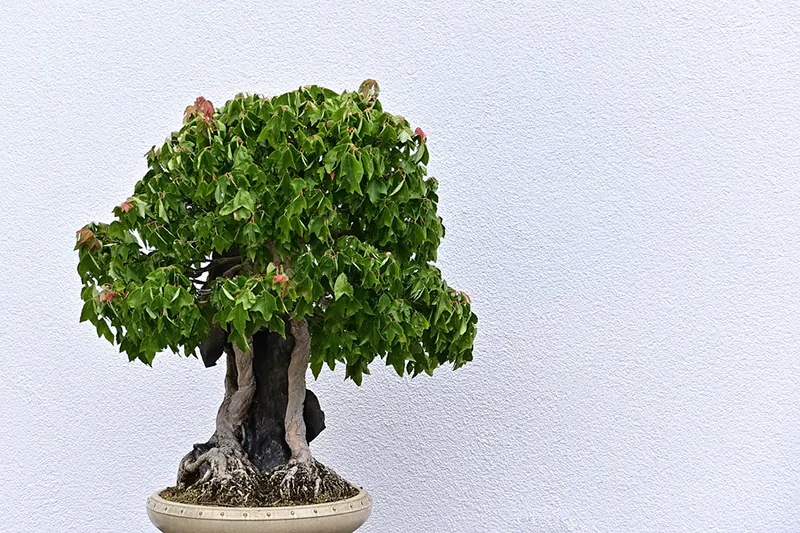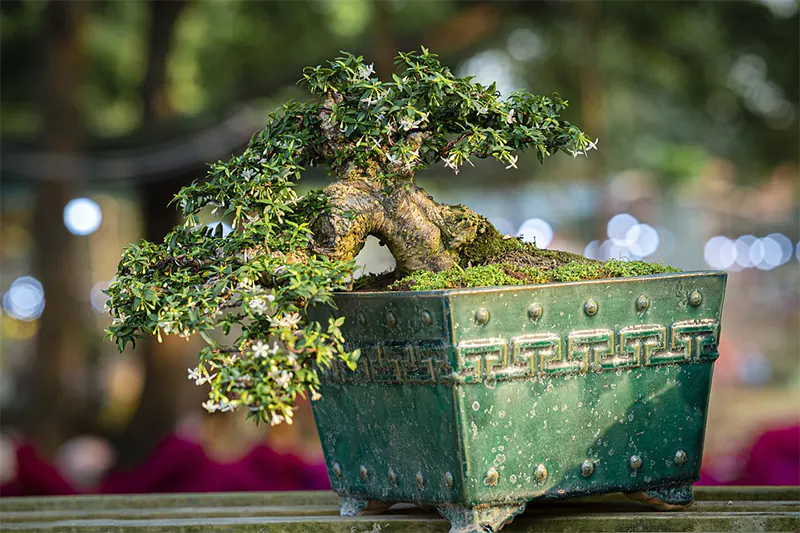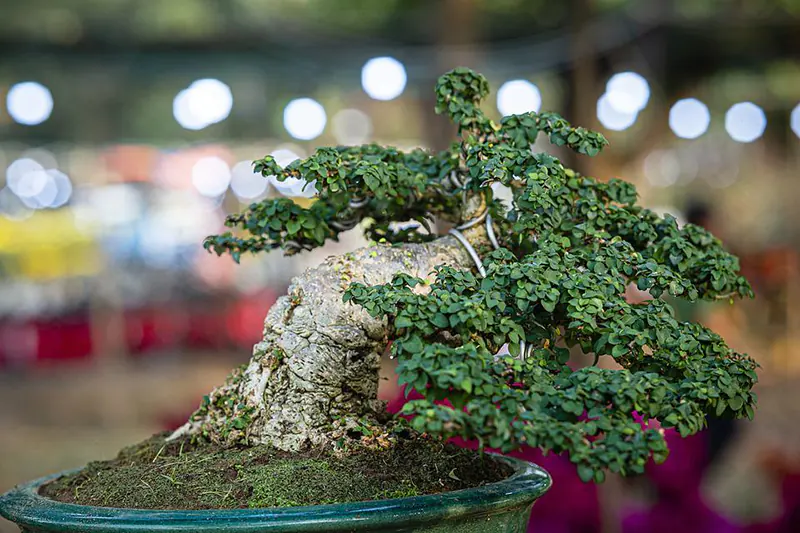Beginner Tips For Bonsai Tree Care
Starting a new hobby or gardening expedition can be tricky, but we’re here to help walk you through the beginning of a great one. The art of bonsai is old and sometimes tricky, as you begin to grow a regular tree as a miniature one. Fortunately, there are many ways to make the beginning process easy and quick to grasp.
Throughout this article, we’ll explore how to care for a bonsai, why growing one can be challenging, how bonsais grow compared to regular trees, the most accessible trees to begin growing for beginners, and much more.

How Can I Start Learning To Grow My New Bonsai Tree?
Learning to care for your new bonsai tree can be a hurdle. However, this is easily overcome with research and knowing the basics and your fertilizers. Learning how to deal with pests for one plant will work against the same pest on another after all.
Basic Care
For the most part, all bonsai trees share a similarity in their basic care. From sunlight requirements to the soil where you keep them, most of the basic care remains the same. Almost all bonsai trees will survive or even thrive with a few hours of sunlight and regular bonsai potting soil.
Find the essential care guide for your bonsai tree‘s species and follow it as close as possible. This overview is a great way to quickly understand the basic care you need to give the tree.
Knowing Your Fertilizer
Knowing what each fertilizer element does, what to give a tree, and when is a handy skill. If your tree’s leaves are suffering, giving it nitrogen can quickly help improve its health. Here’s a quick overview of what each element does for your tree.
Nitrogen
Nitrogen increases the growth of leaves and stems above the soil. Nitrogen can be excellent after pruning or if your leaves are wilting.
Phosphorus
Phosphorus helps your roots grow healthier. The element also aids the growth of flowers or fruit. This element should be focused on during the flowering season.
Potassium
Potassium is suited for overall plant health, from roots to foliage. If your tree’s looking a little unhealthy or needs a slight boost, focusing on Potassium can be an easy way to give your tree a pick-me-up.
Do Your Research
Research is a must when growing any plant, especially if you’re new to gardening. Our site has plenty of guides from propagation to growing thicker foliage. We also cover the needs of the different species of bonsai trees you’ll find. Using the information you learn is the best and fastest way to grow a healthy, thriving bonsai tree, even if it’s your first time growing one.

Why Is It Challenging To Grow Bonsai Trees At Home?
For many newcomers, the art of growing a bonsai tree at home is highly challenging. Most of the difficulty originates from a lack of understanding of what a bonsai is and what it needs. These trees are slowly growing, starting at a very tiny size and aging slowly into something just a little bit bigger. For some, the patience of growing a bonsai tree equates to growing Chinese bamboo, which takes five years to begin sprouting.
Light
Each tree has a different daily minimum light requirement, from elms to maples to junipers. This need can range from a full day of sunlight to only a few hours of partial light. While the rule of thumb for most bonsai trees is five hours of sunlight a day, many can survive on less, while some require more. Consider how much light you can provide a tree before you start growing it.
Watering
While most bonsai trees require well-draining soil to prevent root damage, the frequency and amount of water needed vary highly between species. Many of these plants thrive with moderate watering every three days. However, species such as Japanese maples require light watering daily.
Patience
Bonsais can take years to grow, especially if you’re starting by propagating your own seed or cutting into a tree. From the first leaves, your tree grows to its last; with proper care, you’ll have years of watching the bonsai grow between these.
Through these years, you’ll be watering the plant, fertilizing it, repotting it, pruning roots, and trimming foliage. Depending on your location, you may need to move the bonsai between sunlight locations.
Most will struggle to grow a bonsai tree for these three reasons. You need to do your research with any plant, especially when growing a bonsai tree. These trees are meticulous, time-consuming, and slow to grow.

How Do Bonsai Plants Grow?
Bonsais, beautiful and intricate, are less mystical than many of us first thought. No bonsai is genetically different from its regular-sized counterpart. Here are the details about what makes the bonsai’s growth different from a regular tree’s.
Cuttings
As cuttings are the place, most bonsai enthusiasts start when growing a tree, we’ll begin our explanation from here. A cutting is a branch of a tree or other plant. Most bonsai cuttings are branches cut close to the part they stem from. This new piece develops roots and gets planted, where it begins to grow like a new plant with care.
For cuttings to become bonsai trees, you’ll need to wait for the tree to grow several inches tall before you can do any shaping or changing. Only in the most extreme stylings, not recommended for newcomers, is the tree shaped while still incredibly young.
Time is required for the stem’s newly formed roots to take hold and firmly plant themselves in the soil of your container.
Cultivation
How you care for your tree will determine if a cutting or seedling becomes a bonsai or regular tree. From pruning to potting, every bit of care you give a bonsai is tailored to keep it miniature.
Pruning branches to be smaller and in a shape lessens the plant’s overall nutrients, causing it to grow slower while keeping its branches small. Every time you repot the bonsai, you’ll need to prune its roots. Frequent pruning keeps moisture absorption low and the tree in its pot.

What’s The Easiest Bonsai Tree To Grow For A Beginner?
When growing your first bonsai tree as a beginner, there’s a selection of the best trees you can grow. We’ll look at the Chinese elm and the juniper varieties as two of the most accessible trees you can grow into bonsai at home.
Chinese Elm
The Chinese elm is a gorgeous tree to begin growing. The tree requires full sunlight or partial shade. This species is often grown indoors, where it can survive well. While the tree is hardy against some frost, it suffers quickly from over and under-watering.
Juniper
Juniper bonsai trees are another gorgeous and easy-to-grow species. As an evergreen, the tree grows best outdoors in a well-lit location. When watering, the tree can suffer from overwatering. As such, they should only be watered as needed.
Picking Favorite Bonsai Trees
This section will inspect the three most popular bonsai trees and why they’re as commonly grown. We’ll look at their placement, sunlight, and watering needs, as well as whether you should grow one yourself.
Pine
Hardy and easy to grow in your preferred style, the pine bonsai is gorgeous and colorful. The bonsai requires full sunlight and should be watered only once the soil is completely dry. When picking a pine tree, there’s a large variety, but all will take well to trimming and styling.
Dwarf Jade
The dwarf jade is a smaller species than most bonsai; however, it also requires less watering than many other bonsai. The tree thrives when grown indoors and in indirect sunlight. The best placement for this bonsai is any shaded area in your home. When you water the tree, only do so if the soil is dry.
Weeping Fig
The weeping fig is gorgeous and fun to grow as a small tree with an umbrella canopy. From the way the roots grow, twisting before plunging into the soil, to the slight drooping of its leaves. The weeping fig is a gorgeous and space-aware tree for anyone to grow.
The tree needs to grow in moist soil and should be watered as soon as you notice the soil becoming dry. Weeping figs should receive several hours of light but can survive when grown indoors.
Can Bonsai Be Planted And Become Normal Trees?
A bonsai tree is genetically identical to any other tree of its species. The process is easy if it’s time to plant a bonsai outdoors and grow a regular tree. As bonsai grow due to the way they’re cultivated, watered, pruned, and every other aspect of its care, all you need to do is stop.
Plant your bonsai in a larger container, stop pruning it and shaping it as often as you do, and give it plenty of nutrients. The roots will grow thicker, the trunk larger, and everything will eventually grow as normal when given time.
How And Why Do Bonsai Trees Grow Tiny Leaves?
Small leaves are a crucial aspect of the bonsai tree’s appearance. This section will explain why and how to keep your new bonsai leaves small.
Why Are Bonsai Leaves Small?
Bonsai leaves remain small due to the amount of light they receive and the pruning done. When trees receive less light, they grow more foliage to help produce nutrients. The trees also receive fewer nutrients from the soil due to smaller roots. Additionally, large leaves are often pruned off for aesthetic reasons.
How To Maintain Small Bonsai Leaves
Maintaining small bonsai leaves on your tree is easy. Keep your tree in an area where it receives plenty of light, which keeps the tree from growing larger leaves for more nutrients.
Another way to ensure small leaves is to prune the tree during the spring. Pruning allows you to trim off large leaves, keep branches short, and manage the shape of your bonsai tree.
Styling Your First Bonsai Tree
Styling the bonsai tree, shaping it and manipulating it is one of the most notable things many see the first time they see a bonsai tree. Whether in social media or movies, we’ve all seen the masterful art of a well-shaped and mature bonsai. In this section, we’ll look at the five most common styles and how to achieve them.
Spirals
Spiral or twisted bonsai are some of the more complex styles to manipulate a tree into. While possible, it can be a challenge and, as such, is often only done with a few species. Mainly, this style is seen on bonsai, which had their natural home in the mountains, where they frequently grew in a twisted shape.
To grow this style, you’ll need a length of firm wire that you can bend around your bonsai. Twist the wire around the trunk, bending it slowly each day as you shape the tree. Aggressive bending while spiraling the tree will cause it to snap or damage the bark. This form of shaping should be done when the tree is still young and maneuverable, as it will become significantly more challenging after the tree ages.
Windswept
Windswept bonsai have a slight slant to the side yet keep a straight trunk. The effect of this styling is to make the bonsai appear to be under the force of a heavy breeze. As such, the balance of the tree tends to lean in one direction.
Shaping this tree will require pruning and wiring, as one side of the tree will be more heavily pruned. Additionally, this form of shaping will continue as the tree grows, needing constant correction and pruning.
Slant the trunk slightly to one side, bending branches to appear as if they were swept back towards the slant. This style will take practice to perfect, but it is one of the most beautiful if you get it right.
Upright
The upright style is simple, requiring little shaping on most trees. Use an anchor to hold the tree upright and allow the branches to grow outwards in near-parallel lines. The overall effect of an upright bonsai is a more uniform style. The tree must be wider at the base and thin as it reaches the top. You will require frequent pruning to maintain this shape.
Slanted
Slanted bonsais lean slightly more to one side than a windswept style. However, the branches do not bend in one direction as they do with a windswept style. Shaping a slanted bonsai requires little effort, as the tree’s trunk is mainly focused during styling. Depending on the tree, this can create a gorgeous unbalanced umbrella design.
Informal Upright
Informal upright is one of the most natural-looking styles for a bonsai. The trunk grows upright; however, the tree may slant to one side or zig-zag as it grows. However, the overall appearance is similar to an upright shape, with the leaves thinning out near the top of the tree.

Experience Adds Up
Even though this may be your first tree and you’re looking for advice on how to care for it, take your time. Growing a bonsai has a learning curve, no matter how prepared or well-read you are. You’ll make a few mistakes, but with care, the tree will thrive and grow into something unique. If this tree doesn’t take well, you can always learn from it.
FAQ About Beginning To Grow A Bonsai Tree
We’ve looked at the four most asked questions about beginning to grow a bonsai tree. These cover how easy it is to begin growing a tree, what you need to start, which tree to grow, and how much sunlight a bonsai needs.
While bonsai trees aren’t the simplest plants to begin growing, their difficulty isn’t high when starting. If you’re willing to research and take your time growing it, bonsai trees are great for any beginner gardener to start growing.
When starting, there’s a wide variety of tools you’ll need. However, the most important things are a bonsai, a container, and pruning scissors. The container and pruning shears will help you get started at the most basic level, but you’ll soon need fertilizer, wiring, and other supplies. We recommend buying a store-bought bonsai if you’re unsure about propagating one yourself.
Among the varying species, the fiscus, Japanese maple, and Chinese elms are some of the easiest bonsai for a beginner to begin growing. These trees have low requirements, often just needing a little time each day and an excellent location to grow. The fiscus, in particular, is easy to grow due to its resilience and ability to grow in low-humidity environments.
Most bonsai trees require direct sunlight for at least an hour each day. However, many trees will survive in indirect sunlight as long as they get plenty of light daily. The afternoon direct sun is harmful to most bonsai trees, as it will damage the plant’s foliage.







